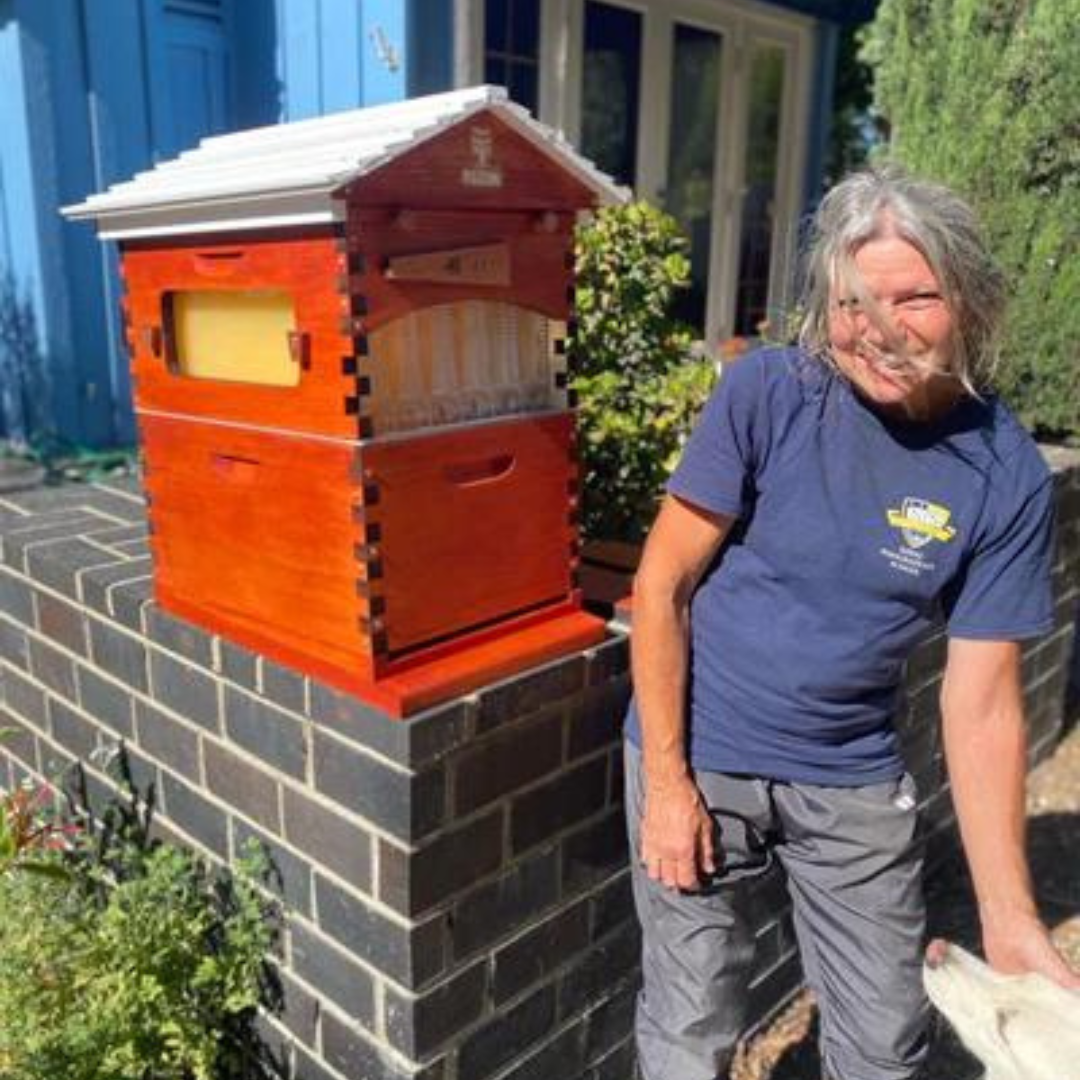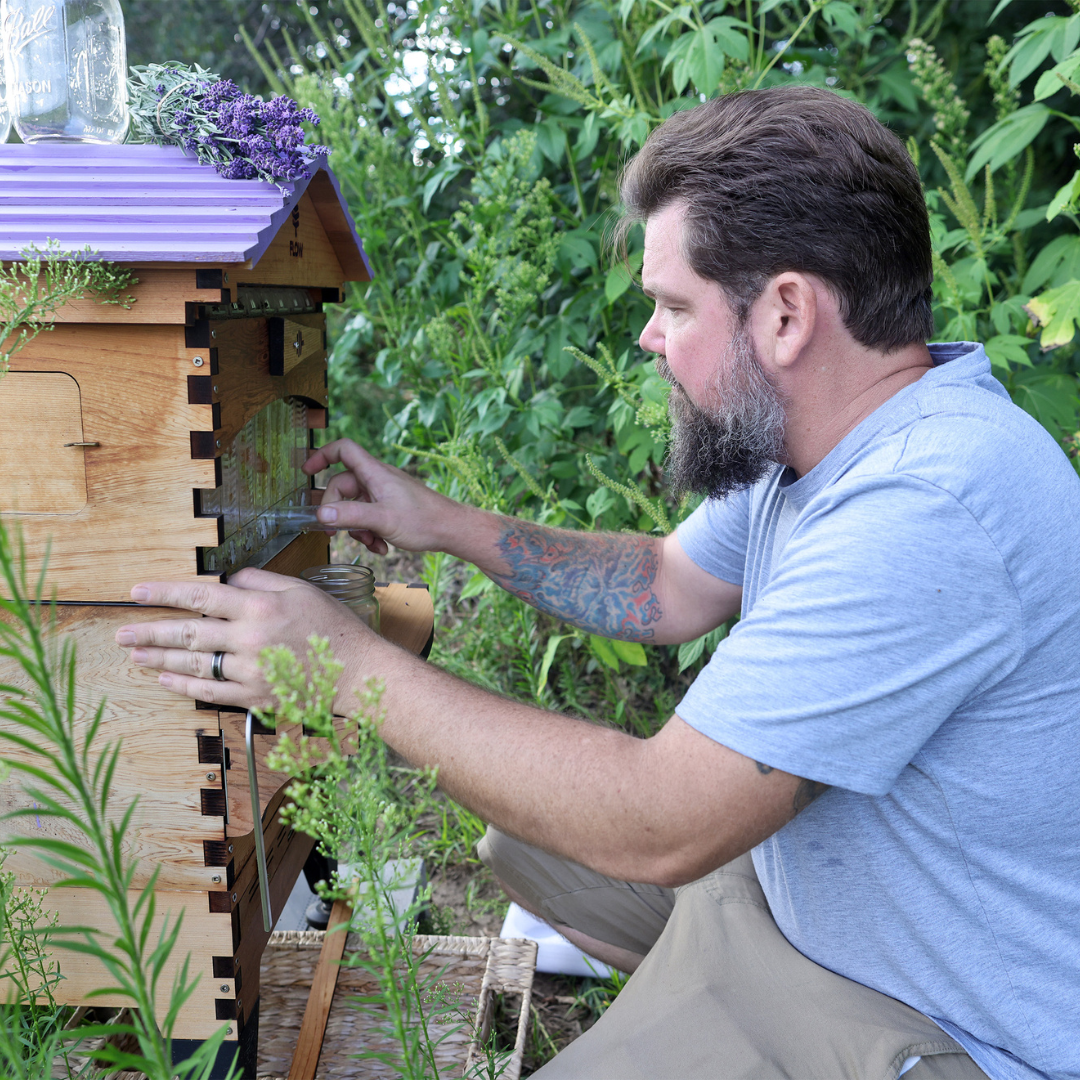Your Cart is Empty
🐝 Spring starter bundle save €80. Shop now 🌿
🐝 Spring starter bundle save €80. Shop now 🌿
Plant it and they will come
by Flow Hive 4 min read
By planting a large butterfly habitat… I was able to start demonstrating the tight relationship between native plants and native butterflies. The butterflies started appearing in the areas where I planted new habitat and my local community has been fascinated.

Below, we speak with Lori Harris of Salt Creek Butterfly Farm in Western Springs, Illinois. Lori’s a passionate educator, butterfly conservationist and Flow Hive beekeeper who runs educational programs for her local community, inspiring curiosity and raising awareness of the importance of pollinators and caring for our environment.
Butterfly farmer is a unique job title. What led you to take up this pursuit? What does it entail?
I was a volunteer at the Peggy Notebaert Nature Museum in Chicago when I learned that many subsistence farmers around the world engaged in devastating land practices such as logging and deforestation, just to make enough money to feed, clothe and shelter their families. A new opportunity through butterfly farming provided a remarkable shift for these farmers.
Training includes cultivating native plants to raise native species of butterflies. The pupa stage of the butterflies are then sold to science and nature centres with butterfly pavilions around the world. The new careers allowed these farmers to care for the earth while providing for their families.
I was inspired, and thought if I tried butterfly farming locally, raising native species and attracting native butterflies, I could work with my own community to care for the earth in our part of the world as well.

What can you tell us about butterflies in your local area?
I was discouraged that children and adults alike recognise exotic species of butterflies far more than our native species. That’s because their exposure to butterflies was relegated to museums, not outside in our own communities.
Butterflies are an ‘indicator species’, meaning they reflect the health of the habitat or environment. Our state butterfly, the monarch, has lost 80% of its population in the past 30 years – my community wasn’t familiar with our native species, because we don’t have the appropriate habitats for them any longer.
By planting a large butterfly habitat that included the specific host plants that fed the larva of 25 native butterfly species, I was able to start demonstrating the tight relationship between native plants and native butterflies. The butterflies started appearing in the areas where I planted new habitat and my local community has been fascinated.

How does beekeeping fit into your work with butterflies?
I’ve done butterfly conservation work for 12 years now, and realised the habitats I’ve cultivated for butterflies are largely the same habitats bees are looking for. When the retirement community I work with said they were going to hire a beekeeper I thought, ‘I could learn that, it’s a natural progression to the work I’m already doing.’
My daughter, a paediatric optometrist, was also interested in bees so we started learning together. We just completed the 3-year master beekeeping certificate program from the University of Montana and we manage 16 hives together.
They’re on rooftops of community and municipal centres, a homeless prevention shelter, historical society, private properties and a farm. The neighbouring farmer converted 80 acres of cornfields to native pollinator habitat through a government incentive program – it’s a spectacular undertaking.

What's the most rewarding aspect of your work with your local community?
I feel like my classes have encouraged kids to observe, ponder the world in their backyards and formulate questions. They also love sharing new information with their parents, so the curiosity has become contagious!
This summer I offered a family beekeeping program in my area – I had 30 local families enrol and we dedicated two Flow Hives to the effort. Children voted on the Queen’s names (Bee-yonce and Bee-o-patra won out). The families received regular emails and videos from me on what was happening in their hives, had private family hive visits, and shared in the honey harvest.
I can’t tell you how much the families loved working with the Flow Hive. We had to make an agreement that the children wouldn’t put their finger under the spout of honey as it was going into the jars. Finger licking was an irresistible temptation!

What tips can you share with readers who want to support pollinators in their local environment?
Find out what the native species are for your area. Many seed and plant catalogues include information specifically on natives and what butterflies or birds they attract. You can make an entire healthy ecosystem in your own backyard in a short amount of time. Plant it and they will come!
Also note it’s not necessary to kill weeds. My yard is full of creeping charlie, a dreaded weed to many. It is one of the best early spring resources for bees. I also have many, many dandelions in the spring. I’m educating my neighbours that not only is there no shame in having dandelions, I feel it is a badge of honour. I feed my bees, and welcome my neighbours to do so as well.
All images supplied.
Hear more from Lori @saltcreekbutterflyfarm or visit saltcreekbutterflyfarm.com.
Ready to get started? Shop Flow Hives
Also in Customer and Flow Ambassador experiences

The Upside of Downs – enriching individuals and the community’s lives through connection, farming and beekeeping
by Flow Hive 5 min read
We speak with the Meier family of Mulberry Lane Farm in California, about their program “Upside of Downs”. Ron, Karen, Tom and Steve, along with a number of volunteers, run “The Upside of Downs” program, providing people with a healthier lifestyle and a more inclusive perspective through farming, seed-saving, beekeeping and sharing experiences. We also hear from Jon, a passionate educator and their mentor beekeeper, who has been helping along the way and upskilling Ron.
Read More
Paint it purple: the symbiotic relationship between a lavender farm and 40,000 bees
by Flow Hive 3 min read
We chat to lavender farmer and Flow Hive beekeeper Kirby Bivans from the Old School Farmstead in Wisconsin, about what led the Bivans family to embark on this colorful endeavour and how bees have become a vital part of their business.
Read More
Garden remedy: why growing your own food is the bees knees
by Flow Hive 4 min read
We speak with Paul Jones from Ohio, USA, a passionate gardener and Flow Hive beekeeper who educates families in the art of the green thumb. His focus is on sharing the joy of growing home produce and making gardening feel more accessible (and fun!) for everyday families.
Read More